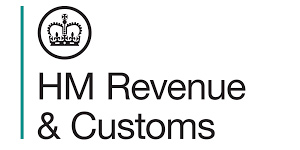HMRC SDLT: Guidance on Completing SDLT Forms; Scottish Details Archived
Principles and Concepts of SDLT Forms
This section provides detailed guidance on the forms required for notifying a land transaction, specifically focusing on SDLT1, SDLT3, and SDLT4. It includes further instructions for completing question 29 on the SDLT1 form and provides Scottish local authority numbers.
- Guidance on forms SDLT1, SDLT3, and SDLT4.
- Instructions for completing question 29 on SDLT1.
- Information on Scottish local authority numbers.
- Part of HMRC’s internal manual for land transactions.

Read the original guidance here:
HMRC SDLT: Guidance on Completing SDLT Forms; Scottish Details Archived
Guidance on Processing Land Transactions and Related Forms
Introduction to Land Transactions
When you buy or transfer land in the UK, you must follow specific procedures and complete certain forms. The main forms for notifying land transactions to HMRC are SDLT1, SDLT3, and SDLT4. It’s essential to understand what these forms are, when to use them, and how to fill them out correctly.
Key Forms Explained
Form SDLT1
Form SDLT1 is the main document for reporting your land transaction to HMRC. You need this form for both residential and non-residential properties, whether you’re buying or transferring ownership.
When to use Form SDLT1:
– When you are the buyer or seller in a land transaction.
– If the transaction is completed and requires stamp duty land tax (SDLT).
Key Sections in SDLT1:
– Personal details: Include your name, address, and other identification information.
– Property details: Provide the address and description of the property involved in the transaction.
– Transaction details: Specify the price paid and any other relevant financial information.
Form SDLT3
Form SDLT3 is used for additional declarations after the completion of a land transaction. You will typically use this form if you make a claim for relief on stamp duty or if you believe that another form of tax applies.
When to use Form SDLT3:
– If you have claimed relief for a first-time buyer.
– When you think you have paid the wrong amount of SDLT.
– To apply for a refund if the transaction was cancelled.
Key Sections in SDLT3:
– Claim information: Outline the type of relief you are claiming and the exact nature of your request.
– Personal details: Provide updated information if there have been any changes since filling out SDLT1.
Form SDLT4
Form SDLT4 is used to appeal against SDLT assessments. If you disagree with how HMRC has assessed your tax bill related to your land transaction, you can use this form to lodge your appeal.
When to use Form SDLT4:
– If you believe your SDLT assessment has been calculated incorrectly.
– To formally dispute the amount you have been charged.
Key Sections in SDLT4:
– Details of your case: Include the relevant transaction and your reasons for disagreement.
– Evidence: Support your claims with any documentation that strengthens your case.
How to Complete the Forms
Completing these forms correctly is vital to ensuring that your transaction is processed without issues. Here are some general guidelines for filling out SDLT1, SDLT3, and SDLT4.
Gathering Information
Before you start filling out any of the forms, gather all necessary information. This includes:
– Identification proofs (like your National Insurance number).
– Details of the property, including title numbers and land registry information.
– Information regarding the price and terms of the transaction.
Filling out the Forms
– Use clear and concise language. Ensure that you write neatly so that your forms can be read by the HMRC staff.
– Double-check your figures to avoid mistakes, especially regarding monetary amounts and personal details.
– If you are using a computer, print clearly, avoiding flourishes or unnecessary decorations.
Guidance on Specific Questions
Question 29 in SDLT1
Question 29 of the SDLT1 form asks about the Scottish local authority number if the transaction involves land in Scotland. Although this information is becoming less relevant, it is still essential for clarity in official records.
What to Include:
– The specific local authority number associated with the property’s location.
– If you do not have this number handy, you can often find it on the local authority’s website or by contacting them directly.
Changes in Scottish Details
Recent updates indicate that specific Scottish details may no longer be necessary in certain contexts. However, if your transaction involves Scotland or you are submitting an application related to Scottish legislation, ensure all relevant information is accurately represented on the forms.
Penalties for Incorrect Submissions
Filling out these forms incorrectly can lead to penalties or delays in processing. Here are some common penalties:
Potential Penalties Include:
– Fines for late submissions.
– Additional tax charges if the incorrect amount of SDLT is paid.
– Legal consequences if inaccurate information is deliberately provided.
To avoid these issues, take your time to ensure accuracy when filling out the forms.
Support and Resources
If you need help with filling out your forms or understanding the requirements, consider the following resources:
- HMRC Website: Check the official HMRC website for detailed guides and updates on SDLT procedures.
- Local Tax Advisors: Seek assistance from professionals who specialize in tax affairs and land transactions.
- Online Forums: Join forums or groups where you can ask questions and share experiences with others navigating land transactions.
Final Notes on Processing Land Transactions
Completing the necessary forms for land transactions accurately and thoroughly is very important. By understanding the purpose of SDLT1, SDLT3, and SDLT4, as well as how to fill them out, you can help ensure that your transaction proceeds smoothly. Keeping up to date with changes, especially regarding Scottish local authority information, will also assist in maintaining compliance with HMRC regulations.
For more detailed information on each of the forms, visit the specific links provided below:
– Form SDLT1
– Form SDLT3
– Form SDLT4
Remember that every transaction is unique, so consider your specific circumstances when filling out these forms, and do not hesitate to seek assistance if needed.







